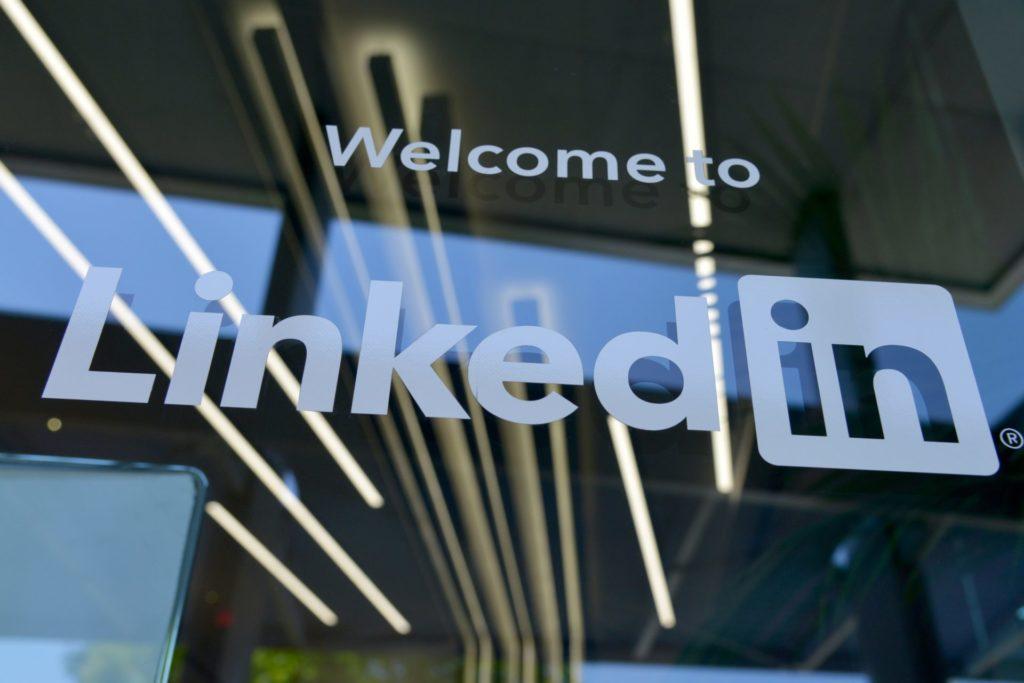Picture in your mind an “old school” radio talk show where random people can dial in to share their thoughts. Now imagine not just one host but (potentially) multiple hosts. Now re-imagine that AGAIN as a mobile device app which incorporates Twitter-esque social profile and social networking features. Do that, and you’ll be in the ballpark of what the hottest new Silicon Valley startup “ClubHouse” represents.
The makers of ClubHouse describe the app as “a new type of social product based on voice that allows people everywhere to talk, tell stories, develop ideas, deepen friendships and meet interesting people around the world”.
Table of Contents
Getting Started on ClubHouse
The ClubHouse App is officially still in Beta release and only available from the Apple Store. It has been rumored that the Android version might be available in the Northern Hemisphere spring.
The onboarding process is very smooth. You’ll be asked to enter your real name and fill out some profile information. If you have a Twitter account you can sync your profile picture, otherwise you’ll need to upload one.
Creating an account requires an invitation code at the present stage. New Clubhouse members are given at least two member invitations which they can share with anyone in their phone contact list. An important point to note here is that ClubHouse enforces rigorous standards of polite discourse. Antisocial behavior can be reported to reviewers who may decide to ban offenders AND potentially ban whoever invited them. So be careful about inviting your crazy uncle onto the platform. It might come back to bite.
Once you are set up on ClubHouse you will see a list of “rooms” with statistics about how many people are in the room, and how many speakers are “on stage”. In order to be granted speaking privileges when you join a room, you click a “raise your hand” button and the room moderator will invite you onto the “stage” to join the other people who have been granted speaking rights.
Rooms can be “closed” meaning you must have a personal invitation to join, “social” meaning only users which the moderators follow can join or “open” which means anyone can participate.
Anybody can start a room and when all the room moderators sign out the room is closed. I have heard of some rooms carrying on conversations lasting 40 hours or more! There is no time limit. The appeal of the app is that people can drop in or drop out of the conversation as they please.
Theoretically, whatever is said in the room stays in the room. Conversations can only be recorded if the room is tagged as “recorded” and if all members explicitly agree. In my limited experience so far, I haven’t seen any recorded conversations. However, it would seem like the company itself must record all conversations for review purposes, in case somebody gets flagged for bad behavior.
Like most online communities, there are certain rules of etiquette. Those “on stage” are expected to mute their microphone (with a tap on a button) while not speaking. To applaud what somebody said, you quickly toggle on/off the “muted” status of your microphone. Just like waving your cigarette lighter in the air at that concert you attended when you were seventeen.
Watch the video from Social Media Examiner to get a deeper look at the application.
Michael Stelzner shares how the pros moderate a room on Clubhouse.
My First Day Experience
I was very lucky to receive a ClubHouse invite code from previous podcast guest, Tara Cull. This Sunday, I spent about six hours on the app and spent most of that time in three different rooms.
The first ClubHouse room was hosted by a pair of Australian ladies on the topic of “ClubHouse for Newbies”, which was very helpful. There were a total of 20 people in the room and about eight on stage at one time. I had a chance to ask a couple of questions in the Q&A session and I enjoyed the friendly atmosphere the room mods created for noobs like myself.
The second room I attended was initially just a couple of people talking about marketing and tech (topics close to my heart). So almost as soon as I entered the room I was invited to join the conversation. A fourth person joined, and we had a great chat, swapping plenty of anecdotes and experiences. I was beginning to see that the attraction of ClubHouse was in creating these unrehearsed, “water cooler conversation” moments. It felt a lot like being at a party and mingling among guests.
The third room was very well attended. There were about 80 in the room and 15 to 20 people on stage. The focus of the room was on sharing stories of “imposter syndrome”, a topic which I discussed in a podcast last October with Zsuzsanna Bekesi Smith and James Green. There were some very inspiring and articulate speakers in this session. I remained in “listener” mode for this one. It had more of a “seminar” vibe, although I’m sure I could have had a turn on stage if I wanted.
Teacherpreneur Marketing
ACADEMY
FACEBOOK GROUP
Use Cases for ClubHouse
From my limited experience on the platform so far I can see the appeal to users who are looking to make personal connections that can advance their career. I heard stories of at least a couple of people who were hired for projects on the strength of the personal connections they made inside ClubHouse rooms.
The application borrows engagement elements of podcasting and webinars. Like podcasting, it’s an easy way for people to find and consume content while doing other things in their busy lives, whether that be household chores, commuting or exercising. Yet it also offers the opportunity to participate and shape the discussion, similar to a webinar. So it seems like a great way for brands to spread their message to new clients.
One feature that could be attractive for all companies, small or large is “Clubs”. After you’ve created and moderated at least a dozen rooms, over a period of a month, you can apply for your own Club on the app. The advantage of having your own branded Club is that anyone following your Club will receive push notification reminders about your rooms.
ClubHouse also seems like an incredible opportunity for brand managers and business owners to learn about how the marketplace perceives their products and services. Every ClubHouse room is a potential focus group and an opportunity to listen to authentic user feedback.

ClubHouse as an ESL Teaching Environment
For ESL teachers, ClubHouse has a lot of potential for building the “know, trust and like” factors with potential new clients. There is nothing to stop any teacher with a ClubHouse account from creating a “Closed” room and inviting five to ten students for a free conversation hour.
Also, as I noted in a previous blog article, ESL teachers who specialize in niches often get the benefit of referrals from other language professionals. Networking on ClubHouse with other ESL teachers can be an additional way for you to gain more students.
The Power of the Voice
The early signs on user engagement bode well for the app’s future growth. Some people have already started to relabel the app as “Crack House” due to its addictive nature.
On a personal level, since installing Clubhouse I have noticed my time spent on the app is significantly higher than any other social network on my smartphone — more than TikTok, Twitter or Instagram. It is a sign of how appealing audio-based social networking can be. And judging from the activities of my friend list inside the community, I am not alone.
Tae Kim, Bloomberg
At a time when many people feel more vulnerable and disconnected than ever, there is something compelling about engaging with others in our own human voice, not via a keyboard.
The challenge for ClubHouse will be in managing their active user growth and controlling the unsavory manifestations of human behavior that inevitably come with that. There have already been some reported instances of unmoderated hate speech on the platform that could lend ClubHouse a bad name if they are not careful.
The company will also need to make some tough choices around user privacy that may not please everyone. For example, the company encourages account holders to use their real name. There are already some calls for this to be made mandatory in the Terms of Service to avoid creepy “ghosting” behavior in some rooms dealing with sensitive topics. On the other hand, would you really want your boss to hear you speaking your mind in a job hunting room? These are some of the conflicting concerns that ClubHouse will need to manage.
The above dangers exist but assuming they have learned lessons from other social media failures, ClubHouse stands a good chance of becoming the “next big thing” on the social media landscape.
Conclusion
For us teachers, coaches and tutors whose stock-in-trade is centered on verbal communication, ClubHouse would appear to be a natural social media “fit” for our careers. The platform holds out the potential for creating impromptu or scheduled conversations with English learners and a way of building accessible “safe space” discussion communities for our students.
In any case, it’s an interesting new technology which is worth keeping an eye on. If you have a chance to get an invitation to ClubHouse I recommend that you snap it up and get to work on building your “brand” within the platform.
Do you have any suggestions on ways that ClubHouse could be leveraged to grow your independent online ESL career? If so, please leave a comment below.
UPDATE 23rd March 2021
Since first writing this article I have spent a fair bit more time on the ClubHouse platform. In fact @lcsparrow (Leah Sparrow) and @babelteq (myself) are now regular hosts of the CLUB called Online Teacher Connection. So feel free to follow either of us or the CLUB itself to get notifications of scheduled room events. We generally have a room on Thursday afternoon/evening, North American time or Thursday evening, Europe time. When you follow the CLUB you can see what topics we are planning to discuss each week, concerning independent online ESL teaching.
I also had the opportunity during our most recent room to chat with Kristian de Groot who is a Cambridge Exam Prep teacher and now a ClubHouse regular. He mentioned to me that he is using ClubHouse with great success to build connections with people who may be interested in working with him in his niche. If you would like to connect with Kristian you can follow him at @kristiandegroot on ClubHouse or through his website C2ExamCoach .
Here is the transcript of our recent email interview:
What is your teaching niche, and how do you find students / Rooms which match that niche?
I’m helping ambitious learners of English prepare for and pass the Cambridge English C2 exam, although I also teach business professionals with different needs (job interview, presentations, meetings, writing reports).
I find C2 exam candidates in Facebook groups and on Clubhouse. There are at least three active C2 exam preparation groups on Facebook.
On Clubhouse there wasn’t a community for Cambridge exam candidates, so I started to open rooms for these learners. It got an amazing response from the people in my rooms, so after 6 weeks I launched my own Club to build a community of exam candidates and other ambitious learners of English. You can probably compare this club to a Facebook group.
Do you do any kind of self-promotion in the Rooms you visit?
Not really. I spend most of my time helping my own community on Clubhouse. Within seven days the club had more than 300 members, so helping them takes up most of the time I spend on Clubhouse. Interestingly enough, B2 and C1 candidates also attend my C2 preparation rooms on Clubhouse. And I’m really excited about that, because I want to help them reach C2 in the long-term!
What can you learn from interacting with your ideal clients through Clubhouse?
Interaction is the most exciting part of Clubhouse compared to other social networks. The combination of audio-only and live sessions creates an intimate, direct and personal connection with the students in your room. The lovely AND candid feedback you get from real people in real time is priceless.
Have you ever used (or have you considered using) “closed” ClubHouse Rooms as a conversation practice space with your paid students (or trial students)?
Not yet, but I’m sure it will happen one day. it’s just not top of mind now. My focus is on building a community with like-minded people that can help each other become the best version of themselves while learning English.
Do you have any advice for ESL teachers who might be thinking about getting started on ClubHouse but are still unsure about what it is, and whether it is worth their time?
Just do it. Especially if you’re starting as a freelancer. I started only as an ESL teacher in 2018, and I’m Dutch, but on Clubhouse those potential disadvantages don’t matter. You just have to show up and help people improve their English. If you do this consistently over time, good things will happen.
Be aware though: Clubhouse is not a quick fix or a growth tactic for teachers who think they can easily come and ask people to buy their services. At least, I don’t use it that way. It takes time to build trust with the people in your rooms, and you should be willing to invest a good deal of time in building up genuine connections with real people. Don’t treat them as just numbers (read: followers on Clubhouse).
The author of this post lives in Japan with his wife and family. He has taught English part-time (online and off) for more than a decade. He is passionate about WordPress consulting, online marketing and using the power of the internet to help people achieve their dreams.
He thinks that until you’ve tried sashimi tuna with wasabi, soy sauce, hot sake and a cold beer chaser, you just haven’t lived.


